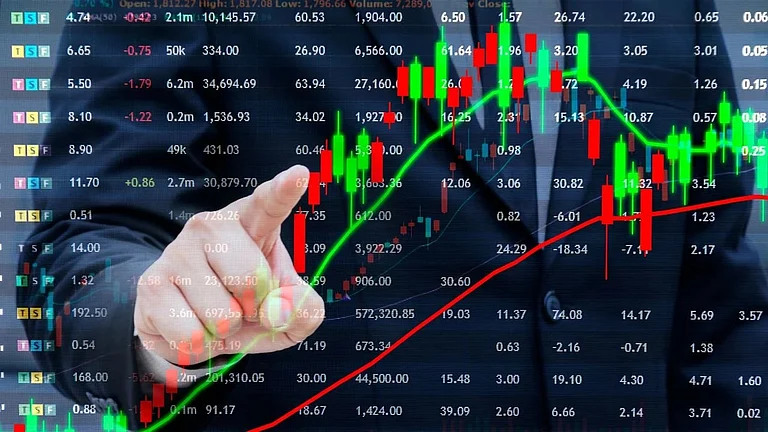Benchmark Nifty 50 reclaimed the 23,000 level in early trade on Thursday, March 20, after a month, as the US Federal Reserve kept its benchmark interest rate unchanged, in line with expectations. The last time Nifty 50 traded above the 23,000 level was on February 19.
Nifty 50 gave a gap-up opening at 23,036.60 and surged to an intraday high of 23,071.10, up 163.5 points or 0.71 per cent. Likewise, Sensex opened at 75,917.11 and zoomed to the day’s high at 76,013.82, up 564.77 points, or 0.75 per cent.
Around midday, both the benchmark indices remained steady in the positive territory, extending gains for the fourth day in a row. With this four-day rally, Sensex has jumped over 2100 points, or almost 3 per cent, while Nifty 50 is up more than 650 points, also a 3 per cent rise.
The broader market also cheered the Fed’s decision, with the Nifty Midcap 100 and Nifty Small cap 100 indices jumping 0.83 per cent and 1.47 per cent to their respective day’s highs.
All 13 major sectoral indices traded in the green, with IT, Auto and Oil & Gas leading gains, each zooming more than a per cent.
Nifty Bank as well, briefly reclaimed the psychological level of 50,000 today, however, around midday, it descended below this mark.
US Fed Keeps Interest Rate Unchanged
The US Fed held its benchmark overnight interest rate steady in the 4.25-4.50 per cent range. The central bank also indicated that it is likely to cut rates by 0.25 per cent twice later this year, in line with its forecast from three months ago.
However, the Fed sharply reduced the country’s growth projections for the year and raised inflation expectations due to the ongoing tariff troubles triggered by US President Donald Trump.
The Fed downgraded its growth forecast for the US economy to 1.7 per cent from the December estimate of 2.1 per cent and raised its unemployment forecast to 4.4 per cent from 4.3 per cent. It also revised the personal consumption expenditures (PCE) inflation and core PCE inflation forecast to 2.7 per cent and 2.8 per cent, respectively from 2.5 per cent, above the central bank’s target of 2 per cent.
PCE inflation, an indicator used by the Fed to track inflation, measures the changes in the price of goods and services consumed by households. While, core PCE inflation is a version of PCE inflation that excludes food and energy prices, which can be more volatile.
The Fed also mentioned that the US economic outlook has become more uncertain due to the potential effects of the Trump administration’s trade and economic policies. “Uncertainty around the economic outlook has increased,” the Fed said in a statement on Wednesday.
What It Means For Equity Markets?
According to VK Vijayakumar, Chief Investment Strategist, Geojit Financial Services, the Fed’s decision to keep the benchmark interest rate unchanged and its forecast for slower growth and higher inflation in 2025 were expected.
However, he pointed out that the key takeaway was the Fed chair's comment that policy could shift depending on the evolving outlook. This outlook is highly uncertain, especially with the ongoing Trump’s tariffs, he said. He also added that the market will likely stay in a wait-and-watch mode until April 2nd when reciprocal tariffs will be announced.
Ashwani Dhanawat, Executive Director and Chief Investment Officer at Shriram General Insurance, said that the market is reacting, with futures showing a 62.1 per cent probability of the Fed resuming rate cuts at its June meeting, slightly up from the previous 57 per cent.
This shift suggests that traders believe the Fed may need to adopt more accommodative measures to support the economy, given the lower growth projections and rising inflation concerns. These developments could lead to greater volatility in financial markets as investors adjust their strategies in response to the Fed's changing outlook.
Buy on Amazon















